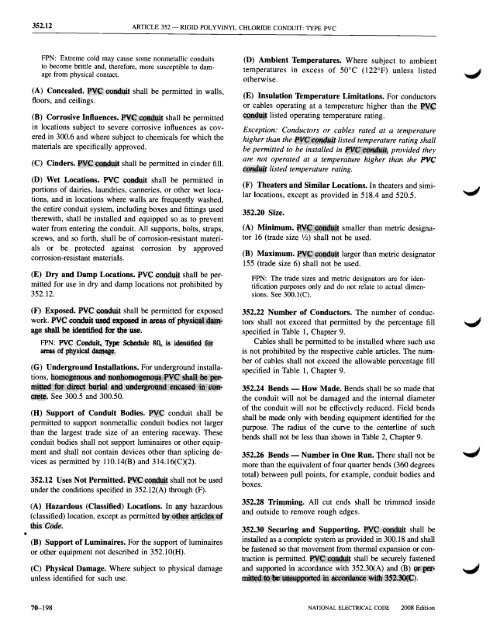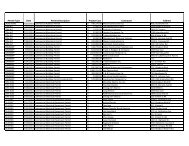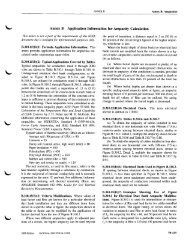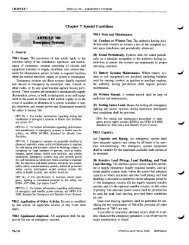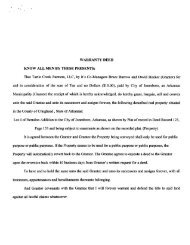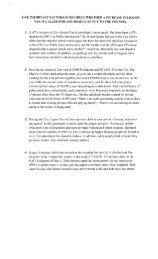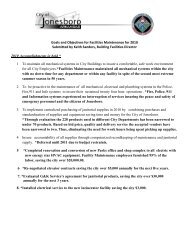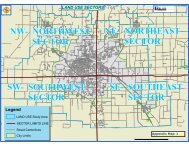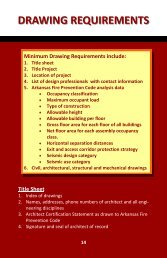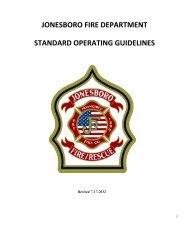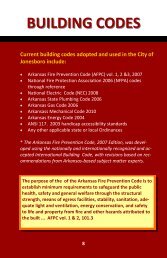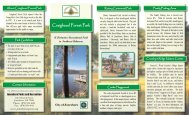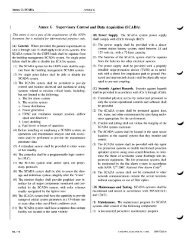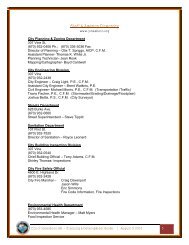Chapter 3 Wiring Methods and Materials
Chapter 3 Wiring Methods and Materials
Chapter 3 Wiring Methods and Materials
Create successful ePaper yourself
Turn your PDF publications into a flip-book with our unique Google optimized e-Paper software.
352.12 ARTICLE 352 - RIGID POLYVINYL CHLORIDE CONDUIT: TIPE PVC<br />
FPN: Extreme cold may cause some nonmetallic conduits<br />
to become brittle <strong>and</strong>, therefore, more susceptible to damage<br />
from physical contact.<br />
(A) Concealed. ~~~l1l:••'t shall be permitted in walls,<br />
floors, <strong>and</strong> ceilings.<br />
(B) Corrosive Influences.<br />
shall be permitted<br />
in locations subject to severe corrosive influences as covered<br />
in 300.6 <strong>and</strong> where subject to chemicals for which the<br />
materials are specifically approved.<br />
(C) Cinders. ~C~••' shall be permitted in cinder fill.<br />
(D) Wet Locations. PV'~~t shall be permitted in<br />
portions of dairies, laundries, canneries, or other wet locations,<br />
<strong>and</strong> in locations where walls are frequently washed,<br />
the entire conduit system, including boxes <strong>and</strong> fittings !Ised<br />
therewith, shall be installed <strong>and</strong> equipped so as to prevent<br />
water from entering the conduit. All supports, bolts, straps,<br />
screws, <strong>and</strong> so forth, shall be of corrosion-resistant materials<br />
or be protected against corrosion by approved<br />
corrosion-resistant materials.<br />
(E) Dry <strong>and</strong> Damp Locations. ~~.~t¥!~. shall be permitted<br />
for use in dry <strong>and</strong> damp locations not prohibited by<br />
352.12.<br />
(F) Exposed. PVC .(:ODdUi.t shall be permitted for exposed<br />
work. PVC conduit ~..~ in areas ofpby~~<br />
age ~ be ideDtmefifor: tbeuse.<br />
FPN: PVC.~ 1)pe.~ 80. ia ~e4Jl_<br />
areas of physical ~age:<br />
(G) Underground Installations. For underground installations,<br />
See 300.5 <strong>and</strong> 300.50.<br />
(H) Support of Conduit Bodies. conduit shall be<br />
permitted to support nonmetallic conduit bodies not larger<br />
than the largest trade size of an entering raceway. These<br />
conduit bodies shall not support luminaires or other equipment<br />
<strong>and</strong> shall not contain devices other than splicing devices<br />
as permitted by llO.I4(B) <strong>and</strong> 314.16(C)(2).<br />
352.12 Uses Not Permitted. shall not be used<br />
under the conditions specified in 352.12(A) through (F).<br />
(A) Hazardous (Classified) Locations. In ~y hazardous<br />
(classified) location, except as permitted ~y::~f:J;••~111~~l:~1<br />
•<br />
(B) Support of Luminaires. For the support of luminaires<br />
or other equipment not described in 352.10(H).<br />
(C) Physical Damage. Where subject to physical damage<br />
unless identified for such use.<br />
(0) Ambient Temperatures. Where subject to ambient<br />
temperatures in excess of 50°C (122°F) unless listed<br />
otherwise.<br />
(E) Insulation Temperature Limitations. For conductors<br />
or cables operating at a temperature higher than the<br />
~"listed operating temperature rating.<br />
Exception: Conductors or cables rated at a temperature<br />
higher than the<br />
listed temperature rating shall<br />
be permitted to be installed in<br />
provided they<br />
are not operated at a temperature higher than the PlV!.;<br />
_!lilji', listed temperature rating.<br />
(F) Theaters <strong>and</strong> Similar Locations. In theaters <strong>and</strong> similar<br />
locations, except as provided in 518.4 <strong>and</strong> 520.5.<br />
352.20 Size.<br />
(A) Minimum.<br />
smaller than metric designator<br />
16 (trade size V2) shall not be used.<br />
(B) Maximum.<br />
larger than metric designator<br />
155 (trade size 6) shall not be used.<br />
FPN: The trade sizes <strong>and</strong> metric designators are for identification<br />
purposes only <strong>and</strong> do not relate to actual dimensions.<br />
See 300.1(C).<br />
352.22 Number of Conductors. The number of conductors<br />
shall not exceed that permitted by the percentage fill<br />
specified in Table 1, <strong>Chapter</strong> 9.<br />
Cables shall be permitted to be installed where such use<br />
is not prohibited by the respective cable articles. The number<br />
of cables shall not exceed the allowable percentage fill<br />
specified in Table 1, <strong>Chapter</strong> 9.<br />
352.24 Bends - How Made. Bends shall be so made that<br />
the conduit will not be damaged <strong>and</strong> the internal diameter<br />
of the conduit will not be effectively reduced. Field bends<br />
shall be made only with bending equipment identified for the<br />
purpose. The radius of the curve to the centerline of such<br />
bends shall not be less than shown in Table 2, <strong>Chapter</strong> 9.<br />
352.26 Bends - Number in One Run. There shall not be<br />
more than the equivalent of four quarter bends (360 degrees<br />
total) between pull points, for example, conduit bodies <strong>and</strong><br />
boxes.<br />
352.28 Trimming. All cut ends shall be trimmed inside<br />
<strong>and</strong> outside to remove rough edges.<br />
352.30 Securing <strong>and</strong> Supporting. shall be<br />
installed as a complete system as provided in 300.18 <strong>and</strong> shall<br />
be fastened so that movement from thermal expansion or contraction<br />
is permitted.<br />
shall be securely fastened<br />
<strong>and</strong> supported in accordance with 352.30(A) <strong>and</strong> (B)<br />
70--198<br />
NATIONAL ELECTRICAL CODE<br />
2008 Edition


